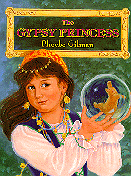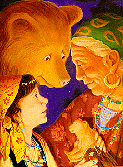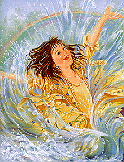


|
The Gypsy Princess
Written and illustrated by Phoebe Gilman.
Kindergarten - grade 3 / Ages 5 - 8.
|

excerpt:
Cinnamon left the banquet hall and went down to the great gilded gates. Opening them cautiously, she stepped onto the rough road that led away from the palace. The wind whispered, "Cinnamon, Cinnamon." She wanted to follow, but it was too hard to walk in the high-heeled princess shoes. Cinnamon turned back. That night, as she tossed and turned upon her soft princess bed, her old auntie again appeared in her dream. "Who are you, my child?" she demanded. And Cinnamon answered, "I cannot remember." The next morning, Cinnamon was more restless than ever. The bars of the palace gates seemed like the bars of a gilded cage.



Recommended with reservations.
T.S. Causabon is a children's author and freelance writer living in Winnipeg.

To comment on this title or this review, send mail to cm@umanitoba.ca.
Copyright © 1998 the Manitoba Library Association. Reproduction for personal use is permitted only if this copyright notice is maintained. Any other reproduction is prohibited without permission.
Published by
The Manitoba Library Association
ISSN 1201-9364
TABLE OF CONTENTS FOR THIS ISSUE - October 13, 1995.
AUTHORS | TITLES | MEDIA REVIEWS | BACK ISSUES | SEARCH | ORDER | CMARCHIVE | HOME